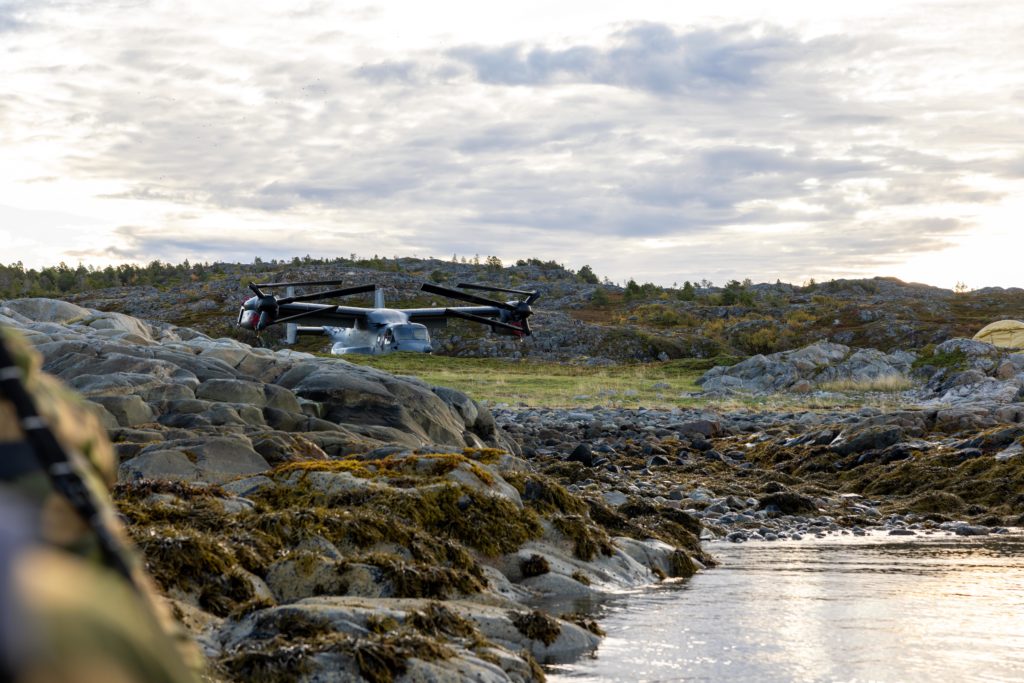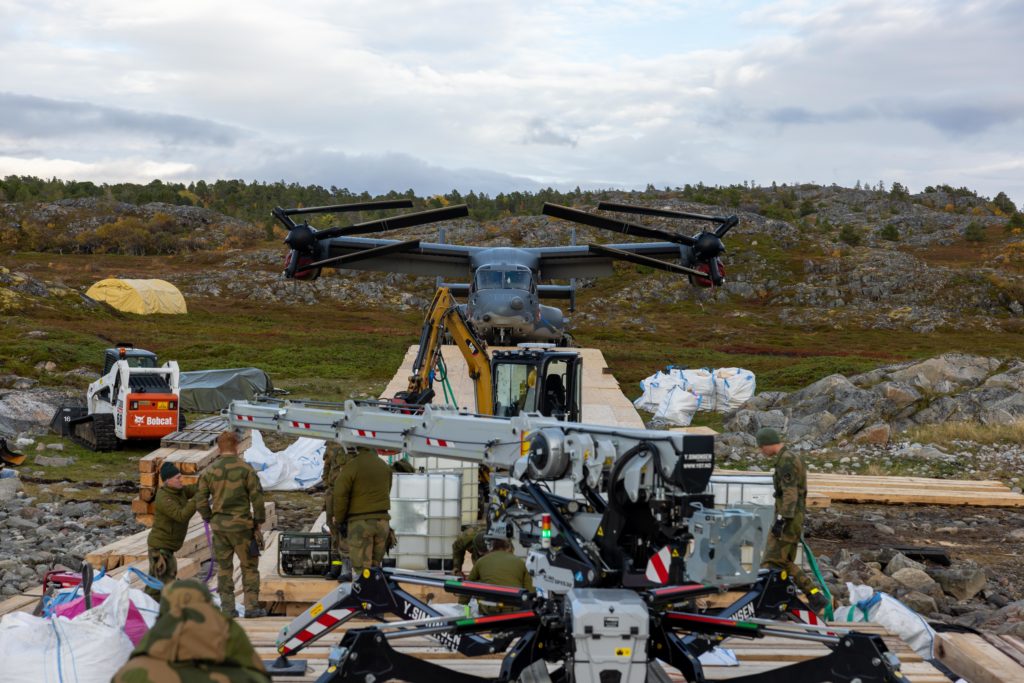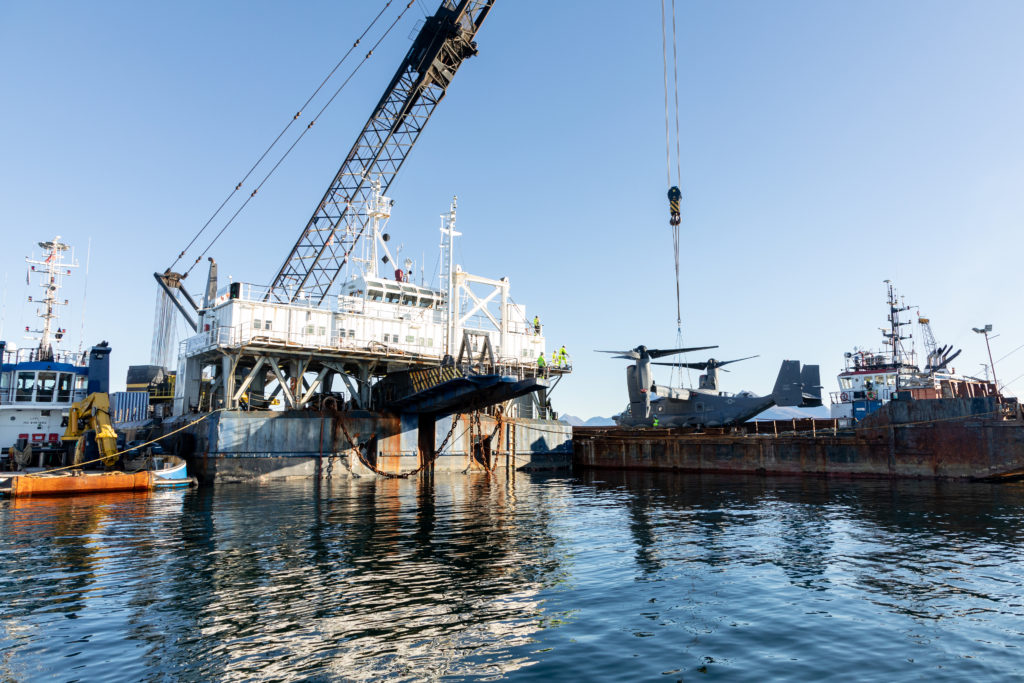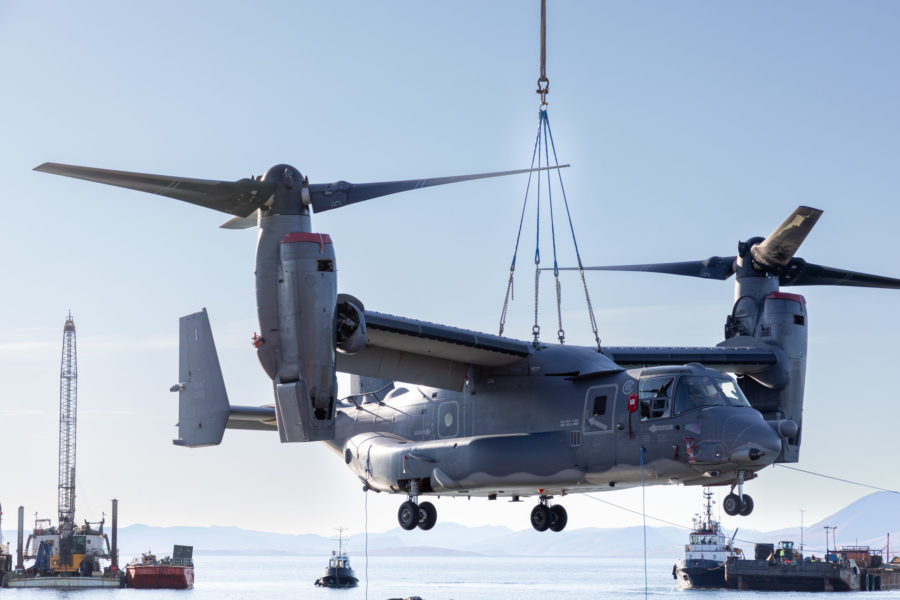An aircraft built to quickly infiltrate and exfiltrate troops from far-flung locations left a Norwegian nature preserve Sept. 27, more than a month after it emergency-landed. The CV-22 Osprey belonging to Air Force Special Operations Command (AFSOC) had been stranded on the island of Senja since making a controlled emergency landing Aug. 12.
The issue was a hard clutch engagement, which causes the tiltrotor aircraft to lurch suddenly and can damage the gearbox and engines. The problem led AFSOC to stand down its fleet of around 50 CV-22s. While the issue remains unsolved, the aircraft was cleared to fly again in early September. Except for the one in Norway.

“These things never seem to happen at airfields,” Lt. Gen James C. “Jim” Slife remarked at an AFA Warfighters in Action event Sept. 7. “They always seem to happen in Norwegian nature preserves above the Arctic Circle at the onset of winter.”
Procedures dictate that pilots must land the plane swiftly in the event of a hard clutch engagement. That forced them to put wheels down at Stongodden nature preserve. The crew was safe, and Norwegian officials wanted to ensure the local wildlife would be, too.
While the aircraft was near the water, it was not close enough to be lifted onto a barge by a crane.
The Norwegian Armed Forces, in consultation with the local Environmental Protection Office, the U.S. Air Force, and civilian contractors, developed a plan for some outside-the-box special operations work of their own.
In the Norwegian Armed Forces’ account of the events, engineers carefully built an improvised wooden road to move the Osprey closer to the island’s shore while limiting damage to surrounding nature and wildlife. The Osprey had to be emptied of fuel and raised up off the ground with a jack, as its landing gear was firmly stuck in the mud. The wooden mats had to extend to the shoreline so the aircraft could be lifted by crane onto a barge. Gravel had to be brought in the firm up the path and to create a jetty as the terrain turned into an uneven shoreline.

The effort faced numerous delays due to Norway’s unpredictable and often poor weather.
When the aircraft finally got to the shore, the crane barge that was supposed to lift it off of the shore was not there, according to Norwegian officials. It was delayed due to bad weather in another part of Norway. On Sept. 27, the Osprey was finally lifted off the shore by crane. According to the U.S. Air Force and the Norwegian Armed Forces, it is safely underway to the closest NATO port.
There, the aircraft must be offloaded to undergo maintenance to replace at least one of its engines and gearbox before, hopefully, finally lifting off under its own power again and landing at its home base of RAF Mildenhall, U.K., Lt. Col. Rebecca L. Heyse, director of public affairs for Air Force Special Operations Command, told Air & Space Forces Magazine.

